Delta del Paraná (SPA-ENG)
Como sabemos, aquellos que no por favor tomen nota, un delta es un accidente geográfico, uno de tantos que se aprende a reconocer estudiando geografía en la escuela secundaria. Se forma en la desembocadura de un río por efecto de los sedimentos fluviales que el propio curso de agua arrastra consigo desde sus nacientes y también con el aporte de sus afluentes; esto provoca que el río se divida en múltiples brazos que se separan del curso principal y forman una intrincada red de canales, algunos navegables y activos, otros simplemente brazos muertos que finalizan abruptamente entre matorrales y bosques o en alguna laguna también encerrada entre la vegetación circundante.
El Delta del Paraná es el segundo más grande de toda Sudamérica, solo superado por el del Río Amazonas en el Brasil, se forma a partir del gran río homónimo luego de en un recorrido de casi 4.000 kilómetros que finaliza en una extensión de 17.000 kilómetros cuadrados formando islas, humedales y pantanos justo antes de desembocar en el Río de la Plata.
Es una región muy activa, soy testigo, gracias a mi afición por la pesca, de los cambios que provocan los sedimentos que arrastra la enorme masa de agua, cada año se notan nuevos canales e islotes que con el paso del tiempo se llenan de vegetación, aves, pequeños mamíferos y reptiles ganando más y más territorio que va penetrando y colonizando el no menos enorme estuario del Río de la Plata.
El día martes pasado, junto a dos amigos nos embarcamos en el Matuka, un antiguo barco de madera de casi 10 metros de eslora propiedad de Mario, gran compañero de correrías de pesca tanto en la Patagonia como en el propio delta. Realizábamos una excursión pospuesta desde un par de semanas antes por la gran bajante en la altura del río que impedía navegar con la tranquilidad y seguridad necesaria. Pero ese martes el viento del sudeste había hecho lo suyo y la altura del agua sobrepasaba los niveles normales, perfecto para una excursión por canales y arroyos para intentar molestar algunos peces.
Les dejo fotografías de la salida donde se puede observar algunos canales anchos y largos como el Arias, el río Luján y el arroyo Leber, tres ejemplos de diferentes vías acuáticas, también aproveché la ocasión para capturar imágenes de algunas aves de gran tamaño como la garza mora y la garza blanca, la primera en la espesura del bosque nativo y la segunda caminando tranquilamente entre los cruceros y lanchas de la amarra donde Mario deja su antiguo barco. Aunque no hay registro fotográfico, abundan los biguás, eximios cazadores de pequeños peces, búhos, lechuzas, halcones y caranchos, entre las aves de presa y carroñeros, diversas variedades de patos, gansos e innumerables especies de pájaros; allí entre el espeso bosque encuentran refugio y comida para estar a gusto.
Capturé algunas construcciones típicas y modernas del delta, elevadas sobre altos pilotes para estar a resguardo de las crecidas fuertes, la mayoría con sus necesarios muelles que sirven tanto para amarrar las embarcaciones como para pasar el tiempo pescando, comiendo o simplemente conversando mate en mano, tal como acostumbramos los argentinos a confraternizar.
Todos los cursos de agua, vegetación, vida animal y humana, retratados en esta publicación, se encuentran a más de 20 kilómetros de la desembocadura en el Río de la Plata, muestra acabada del tamaño y la actividad que existe en este bello, salvaje, intrigante y semi explorado delta del Paraná.
Paraná Delta
As we know, and those who don't, please note that a delta is a geographical feature, one of many that you learn to recognize by studying geography in high school. It forms at the mouth of a river due to the effect of fluvial sediments carried by the watercourse itself from its sources and the contribution of its tributaries. This causes the river to divide into multiple branches that separate from the main course and form an intricate network of channels, some navigable and active, others simply dead branches that end abruptly among scrub and forests or in a lagoon enclosed by the surrounding vegetation.
The Paraná Delta is the second largest in all of South America, surpassed only by the Amazon River in Brazil. It is formed by the great river of the same name after a journey of almost 4,000 kilometers that ends in an area of 17,000 square kilometers, forming islands, wetlands, and swamps just before emptying into the Río de la Plata.
It's a very active region. Thanks to my fishing hobby, I've witnessed the changes caused by the sediments carried by the enormous mass of water. Every year, new channels and islets are created, which over time fill with vegetation, birds, small mammals, and reptiles, gaining more and more territory, penetrating and colonizing the equally vast estuary of the Río de la Plata.
Last Tuesday, two friends and I boarded the Matuka, an old wooden boat almost 10 meters long owned by Mario, a great companion on fishing trips both in Patagonia and in the delta itself. We were on an excursion postponed a couple of weeks earlier due to the significant drop in the river's elevation, which prevented us from sailing with the necessary tranquility and safety. But that Tuesday, the southeast wind had taken its toll, and the water level was above normal levels, perfect for a trip through channels and streams to try to target some fish.
I'm leaving you with photographs of the outing, where you can see some wide and long channels like the Arias, the Luján River, and the Leber Creek, three examples of different waterways. I also took the opportunity to capture images of some large birds like the black-backed egret and the great egret, the former in the thick native forest, and the latter walking peacefully among the cruise ships and boats at the mooring where Mario leaves his old boat. Although there are no photographic records, cormorants, excellent hunters of small fish, are abundant, as are owls, barn owls, falcons, and caracaras. Among the birds of prey and scavengers, there are various varieties of ducks, geese, and countless other species of birds; there, among the dense forest, they find shelter and food to live at ease.
I captured some of the delta's typical, modern buildings, built on high stilts to protect them from floodwaters. Most of them had their necessary docks, which served both to moor boats and to spend time fishing, eating, or simply chatting over mate, just as we Argentinians are accustomed to socializing.
All the waterways, vegetation, animals, and human life portrayed in this publication are located more than 20 kilometers from the mouth of the Río de la Plata, a perfect example of the size and activity that exists in this beautiful, wild, intriguing, and underexplored Paraná Delta.
Héctor Gugliermo
@hosgug

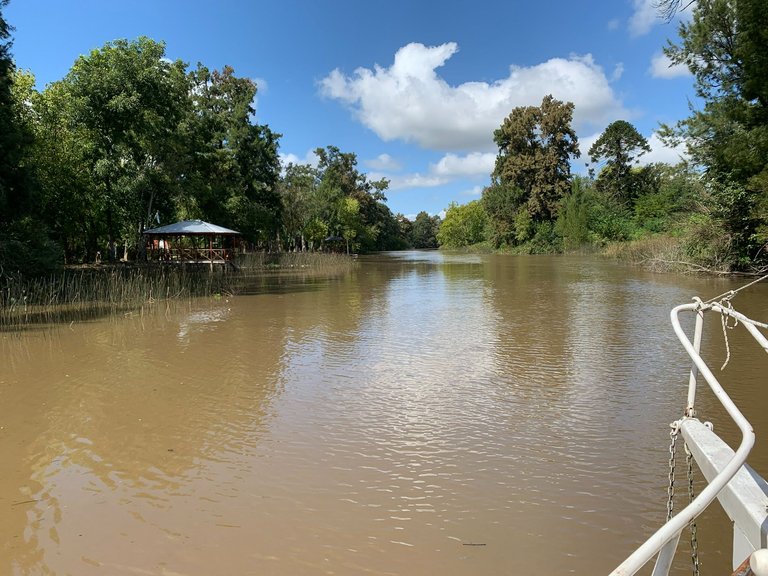
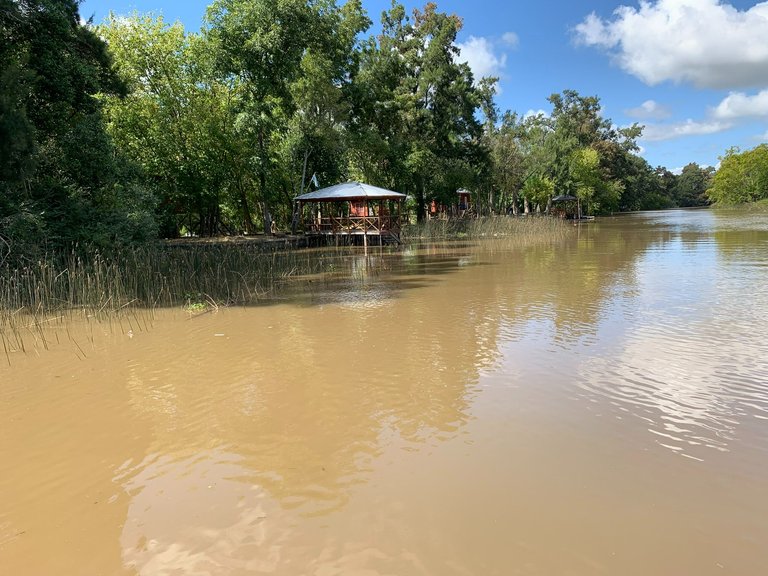
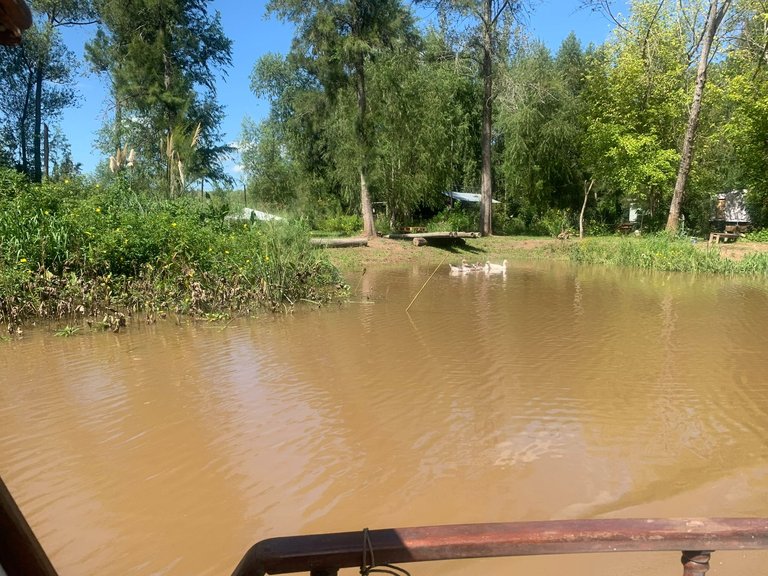

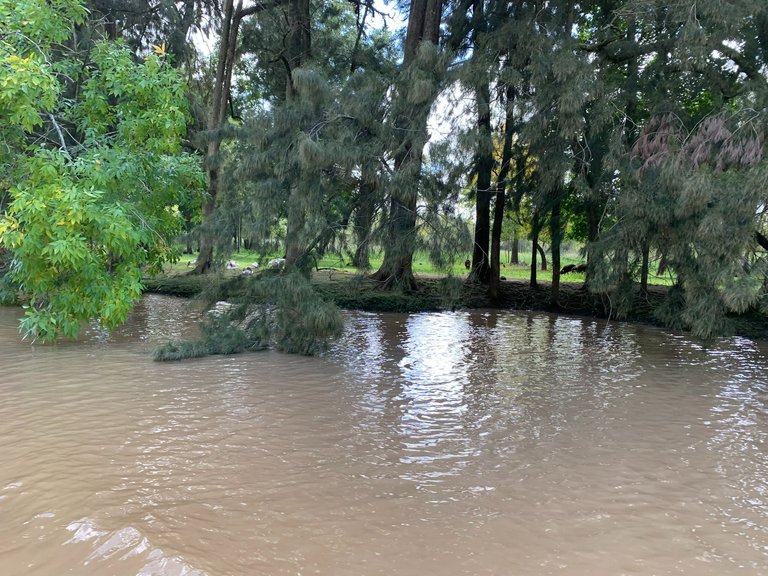
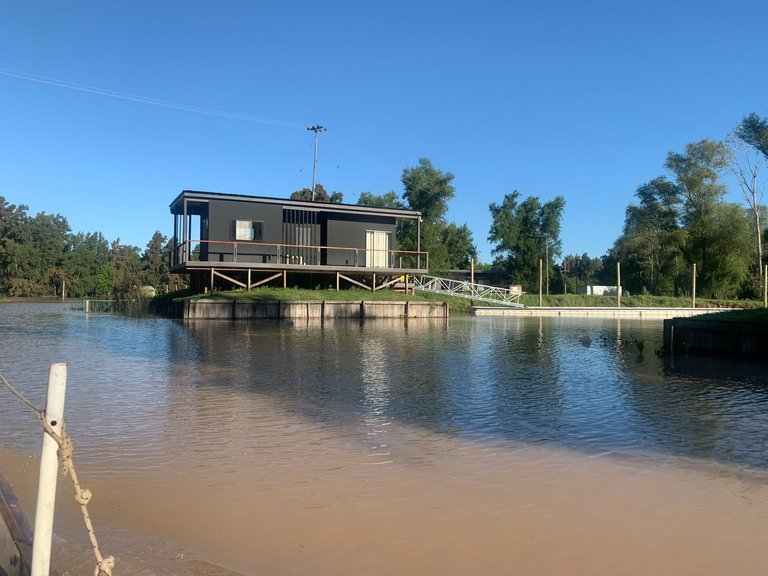
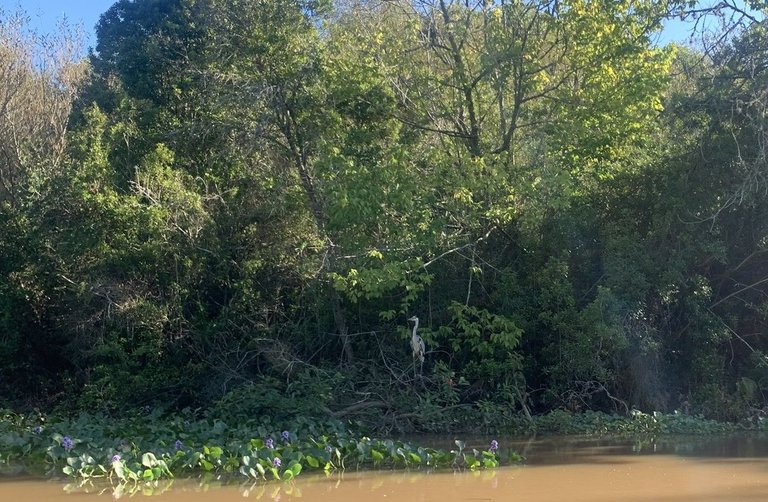
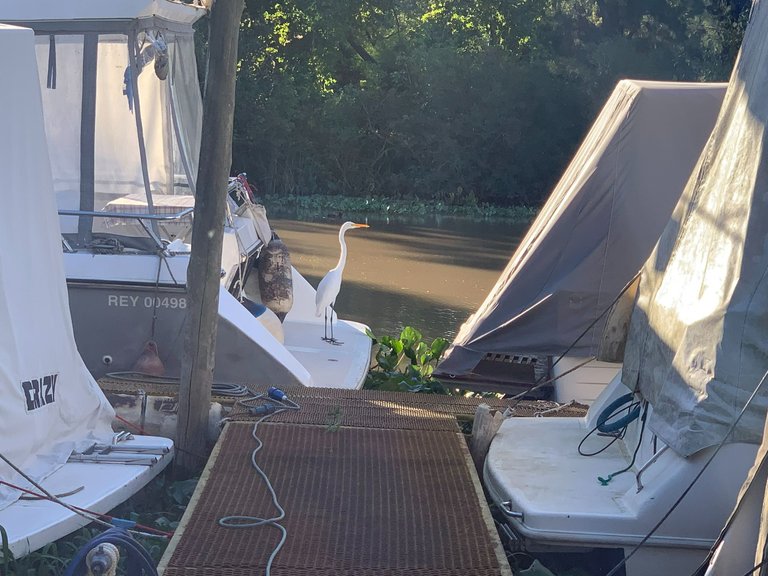
You can check out this post and your own profile on the map. Be part of the Worldmappin Community and join our Discord Channel to get in touch with other travelers, ask questions or just be updated on our latest features.
The natural atmosphere on the banks of the river is calm and peaceful. If the water in this river is clean, it will definitely be even more beautiful and extraordinary.
The water in the delta isn't clear and has a fair amount of suspended sand and silt, but that doesn't detract from the beauty of the surroundings.
Thank you for your comments @riyat
Es un lugar increíble, las edificaciones sobre pilotes me llaman mucho la atención.
Así es, deben estar construidas de esa manera para resguardar las viviendas de posibles inundaciones que elevan la altura de agua considerablemente. No es algo habitual, pero puede suceder por lo tanto es mejor prevenir que curar.
Saludos @doriangel
Hello Hector, good morning.
What wonderful memories your post has brought back. When my children were young and we lived in Buenos Aires, we used to camp on weekends on some of the many islands there.
It's great that you visited with your friends and went fishing.
Beautiful photos.
Have a great day.
Hugs to the whole family.
Thank you, dear friend @jlufer.
I'm glad I reminded you of good times with your family. The Delta is a peaceful place full of nature, which is often a good option for rest, especially close to the great city of Buenos Aires.
Best regards!
We appreciate your work and your publication has been hand selected by the geography curation team on behalf of the Amazing Nature AN Community. Keep up the good work!
Thank you very much, Amazing Nature AN Community!
Como profesor de Geografía debo decirle que explicó muy bien lo relacionado con el delta y solo le faltó decirle a las personas que lo siguen qué es un estuario que es algo que no muchos van a entender, aunque, me gustaría que lo dejara para que quien quisiera buscara y aprendiera más. Al final, es una de las cosas que debemos pretender en el ecosistema.
Este es uno de los ríos más importante de todo el continente y junto al Amazonas, el Mississippi-Missouri, Orino, Paraná, Bravo, entre otros, forman una extensa red hidrológica de gran importancia para el contienente.
Las imágenes muy ilustrativas, incluso, en una de ellas se nota claramente cómo el agua ha estado ocupando parte de la tierra emergida.
Gracias por compartir, es un placer leerle.
Feliz jueves.
Salud y saludos.
As a professor of Geography I must tell you that he explained very well what is related to the delta and he only had to tell the people who follow him what an estuary is, which is something that not many will understand, although, I would like him to leave it for those who want to search and learn more. In the end, it is one of the things we should aim for in the ecosystem.
This is one of the most important rivers of the entire continent and together with the Amazon, the Mississippi-Missouri, Orino, Parana, Bravo, among others, form an extensive hydrological network of great importance for the continent.
The images are very illustrative, even in one of them you can clearly see how the water has been occupying part of the emerged land.
Thanks for sharing, it is a pleasure to read you.
Happy Thursday.
Cheers and greetings.
Gracias @tonyes.
El Delta del Paraná es un lugar hermoso y conozco algunos lugares increibles, no solo para pescar.
Imagino cuánto debe divertirse allí porque es amante de la pesca y si es un lugar increíble para otras cosas más entonces su felicidad es completa.
Feliz viernes estimado @hosgug.
Salud y saludos.
Hiya, @lauramica here, just swinging by to let you know that this post made it into our Honorable Mentions in Travel Digest #2512.
Your post has been manually curated by the @worldmappin team. If you like what we're doing, please drop by to check out all the rest of today's great posts and consider supporting other authors like yourself and us so we can keep the project going!
Become part of our travel community:
Thank you @worldmappin and @lauramica.
You are very welcome @hosgug! it was well deserved. ☀️
Keep up the great work 💪
que lindo el delta del parana , se ve re bueno!! un saludo amigo.
Hermoso lugar por cierto.
Gracias por pasar por aquí @tecnotronics
Hermoso lugar y hermosas fotos! Te felicito!
Muchas gracias @parissousa